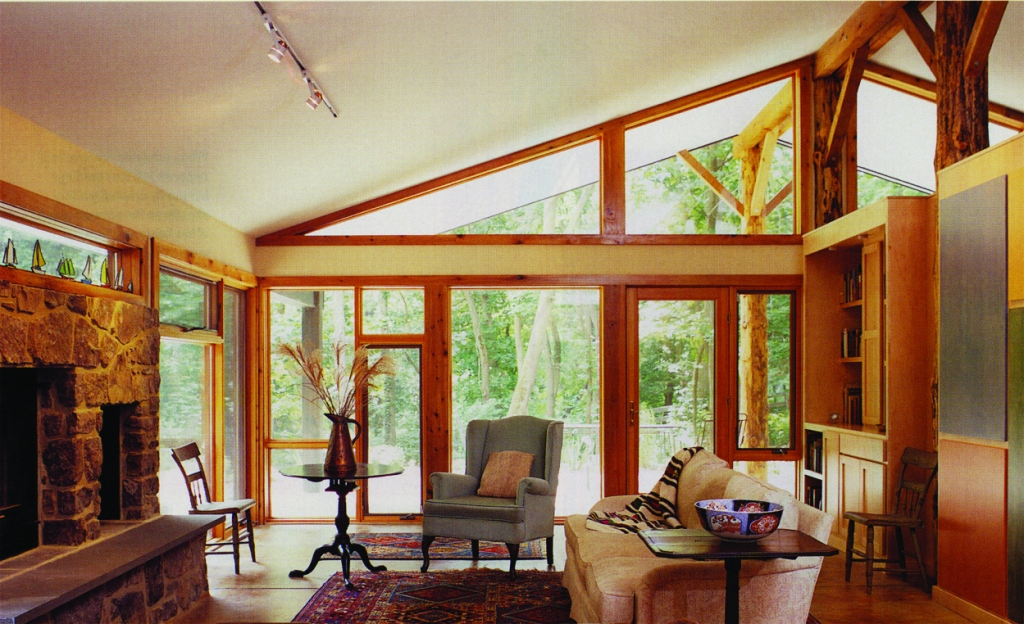Everyday more and more awareness is brought to the necessity of eco-friendly actions and how to make a difference in our environment. Every material we use begins with the extraction of natural resources and ends with the disposal of them.
The only truly renewable and sustainable raw material is wood and that begins with logging. The full “life cycle” of a particular product describes the impacts of that product from its beginning to its end. The impacts can have various measures, such as energy consumption, carbon balance, or water use. Wood is the most environmentally-friendly raw material available to us.
For these reasons, an environmentally-conscious person should be favoring wood use over other natural resources when it comes to building. In this blog post we are going to talk about why using lumber is just about as eco friendly and earth conscious as you can get!

The benefits of lumber as a building material continue to outperform other products on the market in terms of environmental sustainability and performance. When it comes to commercial and industrial buildings that must stand the test of time, lumber has proven it has the necessary strength required, as well as unique advantages over steel and concrete. Plus, this amazing material offers not only remarkable durability but an aesthetic warmth to any type of environment.
Responsibly sourced wood is renewable. Certified forests and plantations will regrow to provide a wide range of other benefits such as further carbon storage, oxygen generation and forest habitat. Additionally, after decades or even centuries of use, wood buildings can be easily adapted or deconstructed and reused, which means they can continue to store carbon indefinitely.
Forests grow back after a harvest. Other natural resources such as metal ores, coal, petroleum, and natural gas do not. The extraction and processing of wood products take far less energy, carbon, and water than other raw materials. The environmental impact of lumber is considerably lower compared to other building materials, such as stainless steel, aluminum or concrete. The role of trees, which are the suppliers of this material, contributes to the reduction of CO2 emissions, causing a positive effect that counteracts climate change. A healthy forest industry not only contributes to the economic health of our communities, but it also contributes mightily to our environmental health through increased management opportunities.
What are the flat-out advantages of using lumber for your building projects?
- Natural, renewable, recyclable, and biodegradable building material
- Carbon positive element
- The use of lumber as a building material implies the need for low energy production
- Lumber is an adaptable, versatile, and durable material
- The sound absorption of lumber
- Electrical and heat resistance
- Studies show that using lumber is healthier for people
- The beauty of lumber
Lumber can be grown and regenerated through natural processes such as replanting and forest management. As forests grow (through solar energy), they also naturally and efficiently remove carbon dioxide from the environment. This is an exclusive benefit that lumber has over other building materials. Carbon is an elemental building block of all living things on earth. As a forest grows, the trees absorb atmospheric carbon dioxide and store it in their leaves, branches and trunks.
Producing lumber uses much less energy from fossil fuels per unit volume than steel, concrete or aluminum while minimizing pollution. In addition, it improves energy efficiency due to its natural cellular structure. As a result, homes, and buildings require less energy for heating and cooling. Plus, it can help regulate humidity levels to a small degree.
To effectively tackle climate change we need to remove excess CO2 from the atmosphere as well as reduce carbon emissions. Responsibly sourced wood manages to achieve both of these. This is because wood stores carbon and has a much lower embodied energy than other major building materials, which are non-renewable and require large amounts of fossil fuels to produce.
Lumber has a natural resistance to electrical conduction. Its strength and dimensions are also not significantly affected by heat, which provides stability to the construction and greater safety for certain fire situations. In fact, there are some types like IPE lumber which have a class A fire resistance, which is one of the many aspects by which it is compared to the strength of concrete or steel.
A great deal of research has shown that lumber in the home environment, at work or at school has positive effects on your health. Studies have found that exposure brings health benefits similar to those of being in nature. Some (out of the many) positive aspects of using it in your projects are:
- Improved mood and self-expression
- Improves air quality by moderating humidity, facilitating breathing
- Warm and comfortable feeling
- Reduction of blood pressure, heart rate, and stress
- When surrounded with the material older adults interact more closely
- Students in classrooms surrounded by the material have lower heart rates and fewer stress responses than students in classrooms with plastic and metal
- Two out of three workers prefer offices with chairs, desks, and blinds made of the material, to the same office with plastic elements
Lumber can add warmth, texture, and character to any room. Studies have shown that people positively associate the building material and find it visually appealing. With the wide variety available, this stunning material offers an incredible range of aesthetic options. In addition to the different mechanical, acoustic, thermal, and environmental properties it possesses.
For all of these reasons and more, we encourage you to use lumber for your next project and let us know what you’re making!





















Leave a comment